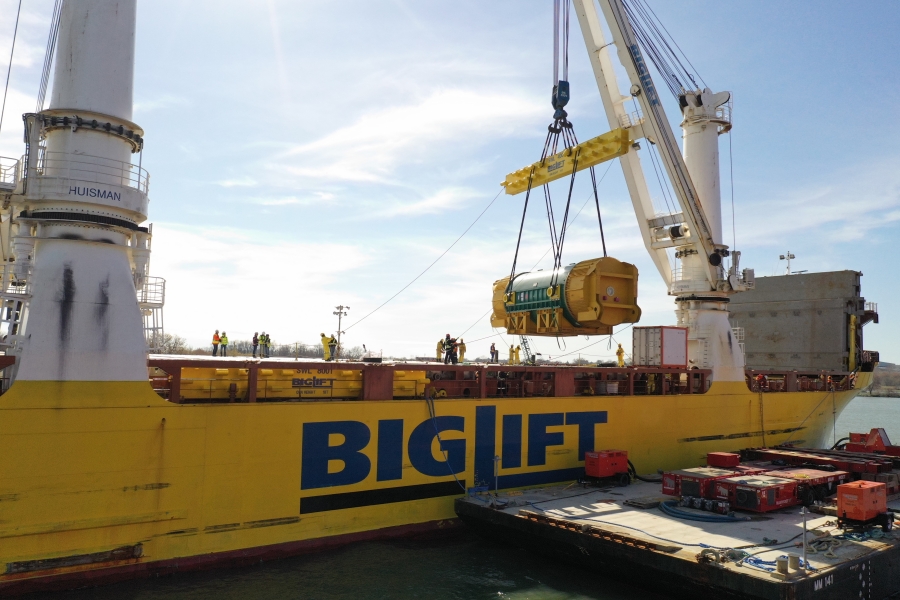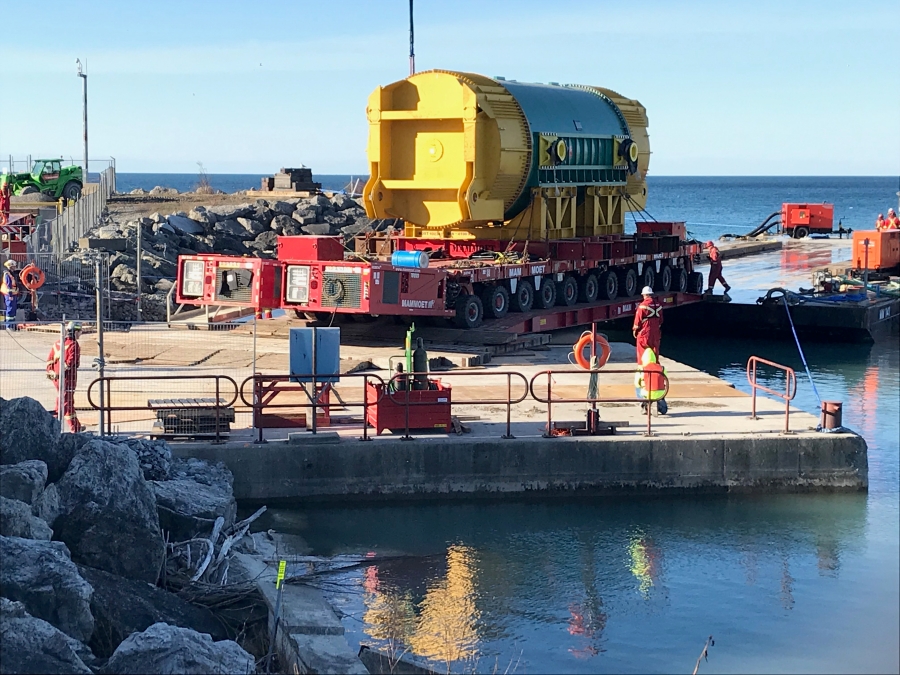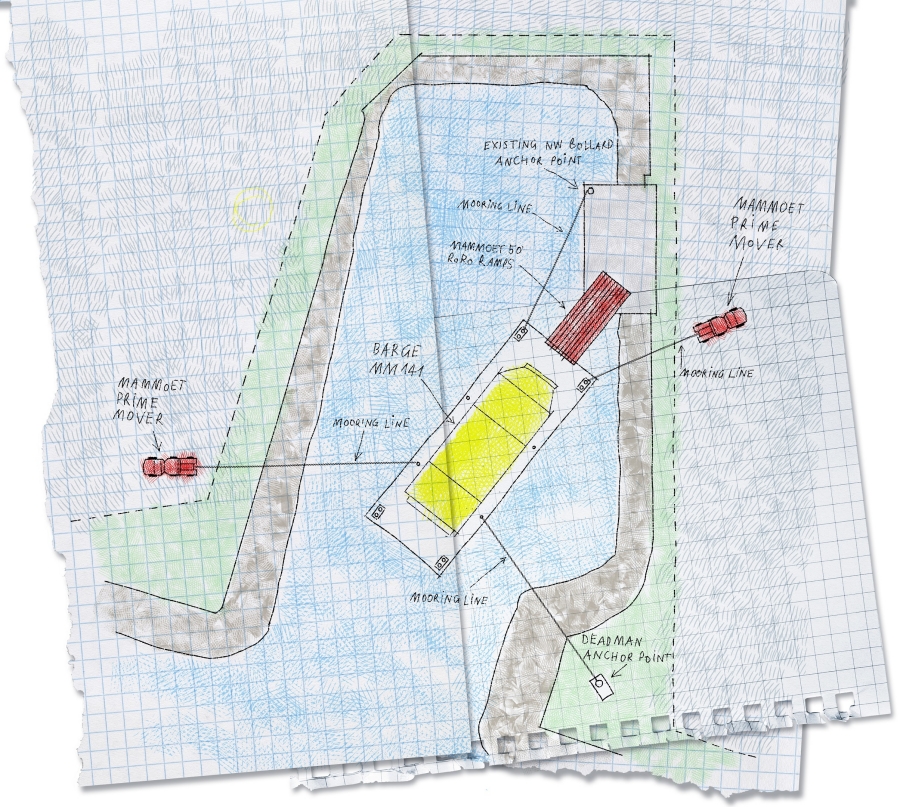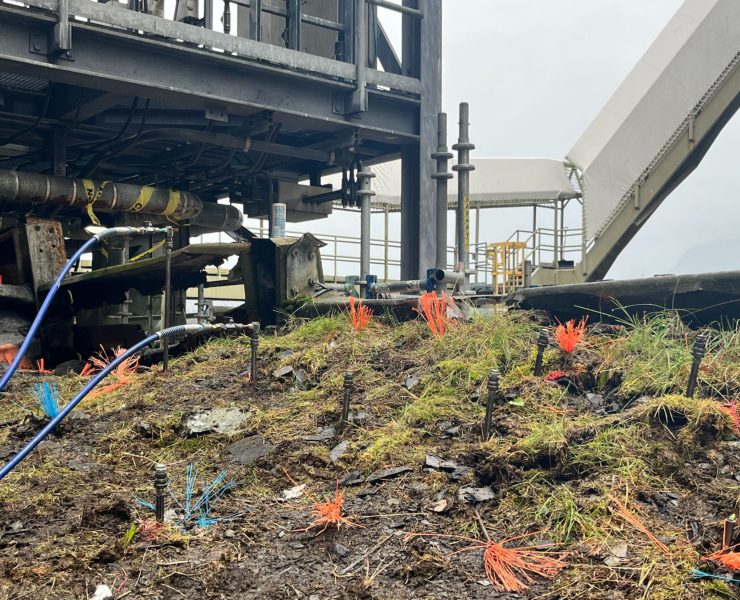Stator Load-In Via Barge Provides Well-Grounded Solution


Canada’s second-largest nuclear facility is undergoing a major refurbishment so that it can supply clean energy for decades to come. Transport of a vital component relied on using an ageing cargo dock for the first time in decades.
Canada produces an impressive 82% of its electricity from greenhouse gas free sources, with nuclear power accounting for around 15% of total electricity output. The Darlington Nuclear Generating Station, located east of Toronto on the shores of Lake Ontario, is an important contributor to this – online since the early 1990s, it generates enough power for two million homes.
Following three decades of operation, plant owner Ontario Power Generation announced a ten-year plan to refurbish Darlington. This ambitious project involved the replacement of major plant components, which will extend the life of the facility for an additional 30 years. It signifies a commitment to keep Ontario running on a reliable and clean supply of power long into the future.
Mammoet colleagues have been on site at Darlington for close to 40 years – helping to haul the heavy components used for its construction back in 1982. More recently, as the facility prepares to extend operations to 2055, Mammoet engineers have helped to move a wide range of modules there, including heat exchangers, transformers and generators.
It was this intimate familiarity with the site that allowed them to view this challenge from an entirely new angle.

Changing state
A crucial part of the plant’s refurbishment was the delivery of an additional stator – a stationary component that helps to convert rotational energy into electrical energy. But these large, heavy units require a lot of logistical planning to be safely delivered to site.
GE was commissioned to manufacture Darlington’s new stator. Assembly took place at its facilities in Poland before shipment to Canada. With such precious cargo in tow, GE entrusted Mammoet with the transport to Darlington’s East Warehouse, where the stator would be stored.
Sites like Darlington produce electricity by harnessing the immense thermal energy created through the process of nuclear fission. The heat emitted in these reactions is used to heat large quantities of steam, which flows through blades, causing them to rotate.
A shaft connects these blades to large magnets within each generator. These magnets then rotate within copper coils located inside the stator, generating electricity. Over time, due to heat and vibration stators become increasingly inefficient and require replacement.

Crossing currents
The new stator began an 8,000km journey via rail from its factory in Poland. It then travelled on the cargo ship Happy River across the Atlantic to the waters of Lake Ontario.
At the nearby Port of Oshawa, the stator was then offloaded onto a waiting barge already loaded with the SPMTs required to drive them onto land. However, disembarking the barge at Darlington posed a serious challenge.
Although the power station was equipped with its own dock close to the generator warehouses, it had not been used for receiving cargo for several decades. During this time, tonnes of silt deposited from the lake water had built up at the quayside. As a result, the barge simply could not reach a position parallel with the quay.
The obvious solution was to dredge the dock until there was enough draft for the barge to berth safely and drive the SPMTs sideways off it. But this would add a great deal of extra time and administration to the project.
Permits would be required from the local authorities, delicate environmental issues would need to be considered, and on top of all this, a dredging operation of this nature would carry a significant price tag. The project needed to be carried out in a tight timeframe following the melting of the local winter ice, so delay was not an option.

Fully grounded
It was during their routine site inspection that the Mammoet team – along with local barge operator McKeil – came up with an idea that would eliminate the need for dredging altogether. It was proposed that the stator should be offloaded from the ocean-going transport vessel onto a shallow draft transport barge for the last leg of its water-born journey.
This barge could be floated in close enough to the quay that 15m ramps could connect it with dry land – but at a roughly 45-degree angle relative to the quay edge. These ‘ro-ro’ ramps would allow the Mammoet team to drive their load off the front of the barge and land it over the corner of the quay instead of the side.
To secure the barge in this position, Mammoet’s engineers mobilized two heavy prime mover tractors and a 50t counterweight to act as bollards. Once safely moored at the Darlington quayside, the plan was then to pump water into the barge slowly, intentionally grounding it.
This extra ballast would allow the barge to settle gently onto the waiting mud below its keel – providing additional stability to supplement this unconventional mooring approach. A dive survey was carried out by the team to confirm that the method was feasible.
The deck of the barge would thereby create a stable platform of similar height to that of the adjoining dockside roadway. The team could then place the ro-ro ramps between the barge and the dockside, allowing access for the SPMT to safely offload the unit and drive it along the route to its temporary home in the site’s warehouses.

Feeling positive
The plan was widely acknowledged as a sound and elegant operational solution. With an in-depth insight into the intricacies of the operation, the team confidently executed the load-in and watched as the stator arrived safely in its new home.
“The movement of the Generator Stator from Poland to our Darlington Nuclear Station’s East Warehouse was our first major lift and material movement for our Unit 3 Darlington Refurbishment Project,” explains Bill Owens, Senior Vice President, Nuclear Refurbishment Execution, Ontario Power Generation.

“The detailed planning and the expertise in the project execution was truly remarkable. I had the opportunity watch the stator being transported from the barge in Lake Ontario and onto land, then moved into our East Warehouse and it was an impressive display of teamwork and skill by everyone involved.”
This approach ensured delivery of a crucial plant component while preventing ecological damage to the quay and saving on the prohibitive costs of dredging the harbor. Though the approach here was unconventional, Mammoet was able to draw upon both the expertise of its many global engineering centers and the world’s largest fleet of heavy transport equipment to deliver an innovative yet practical solution.

















